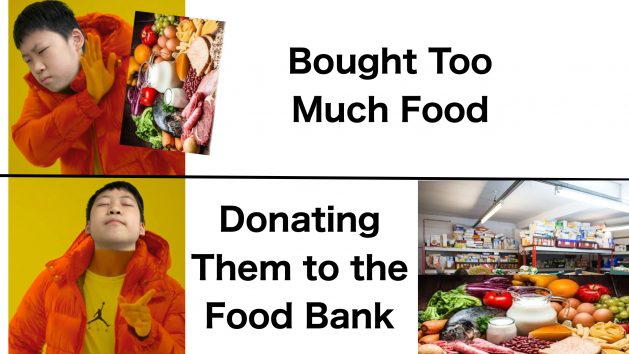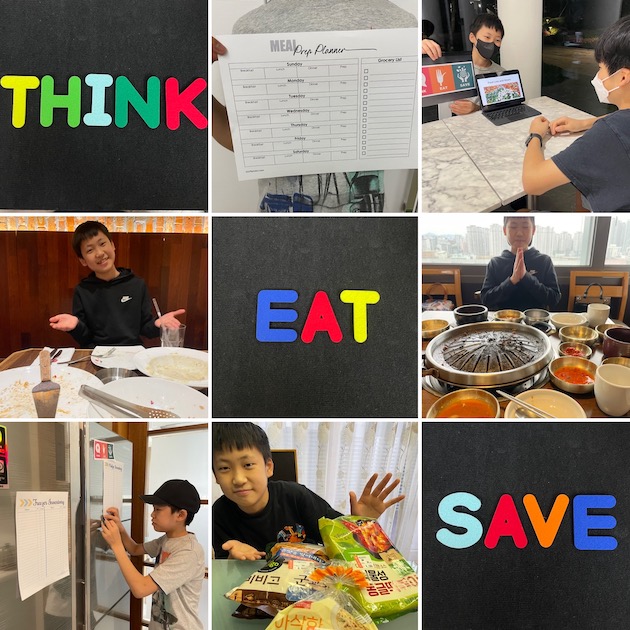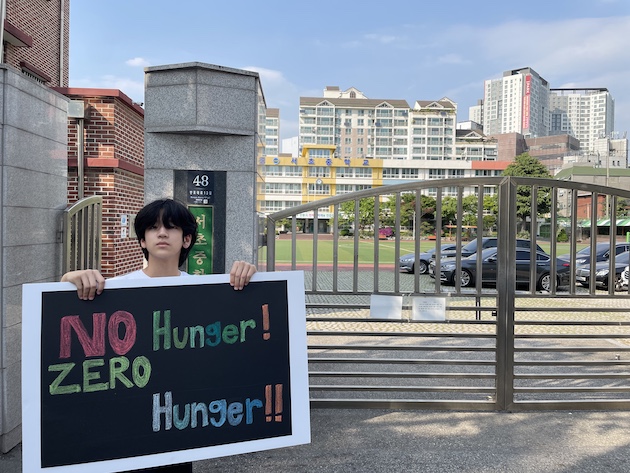How to Stop the 'Hunger Pandemic' During COVID-19

Seoul, Tokyo, Boston, Jun 13 (IPS) - Johnny, living in the United States (US), goes to his school and gets free breakfast and lunch there. There may not be enough food for dinner at home. But he knows that he can get fed at school. Sadly, however, after the pandemic, schools were closed, which meant no breakfast and no lunch for him.
Living in the United Kingdom (UK), Peter faces the same problem. He is lucky because he has a caring teacher who painstakingly walks five kilometers every day to deliver his meals. But not everyone is as lucky as Peter.
Farmers produce about 4 billion tons of food globally, but 1.3 billion tons (about one-third) are wasted and lost. Can you imagine how much that is? 100 kg of food loss and waste for every person on the planet!
Are you surprised?
Did you think that the issue of hunger concerns children in developing nations only during COVID-19?
Hunger now extends to countries like the UK, South Korea, Japan, and the US.
In other words, especially during the pandemic, hunger is not their problem but OUR problem.
Therefore, the urgency in solving this issue has become more apparent to those living in developed countries. We hope to inspire a movement of change through our efforts and inspire others to fight hunger by stopping food loss and waste.
We have to ask a fundamental question: Why does Johnny have nothing to eat while Sam in the neighborhood has too much food to eat?
Extending this question to an international level, why are children in Somalia starving while children in the US have obesity problems for overeating? What causes such inequality? And what can we do about it? We know that it sounds like a daunting challenge. How can kids like us, young and inexperienced, make a difference in world hunger?
A contingent of adults thinks we have neither the experience nor the expertise to bring changes to the “real world”.
No one said stopping hunger would be easy, especially during this pandemic. But it’s necessary, and it’s worth it.
From our research, the solution to world hunger, especially during COVID-19, can be two-fold. Firstly, the redirection of excess foods towards those in need, and secondly, the ‘untact’ method.
Let us start with the redirection of excess foods. There is a saying: “Someone’s trash is someone else’s treasure.” In other words, the food that Sam wastes can feed Johnny’s entire family.
Let’s take it to a global level. According to the United Nations Environment Programme (UNEP), the food currently lost or wasted in America could feed 300 million people, and in Europe, 200 million people.
If food could be redistributed to people or nations in hunger before it is wasted or lost, we would end the hunger pandemic.
Indeed, many countries are running soup kitchens and making donations of food. But after the COVID-19, many countries closed their borders, banned social gatherings, and even eating-in facilities.
Furthermore, a survey from the Borgen Project revealed that half of the people surveyed had concerns about exposing themselves to the virus in these eating spaces.
So not only less economically developed countries (LEDC) but also more economically developed countries (MEDC) are facing a hunger pandemic due to COVID-19.
According to Feeding America, an estimated 42 million people, or one in eight Americans, faced food insecurity in 2021.
How can we solve this hunger crisis during the COVID pandemic? We are suggesting our second solution: using the ‘untact’ method.
Since the COVID-19 outbreak, a new term, ‘untact’ (a combination of the prefix’ un’ and the word ‘contact’), has been floating around our society to indicate contactless movement in our daily affairs.
Can we somehow use the ‘untact’ method to redirect and redistribute foods before they are wasted or lost?
We find the answer in technology – in apps. For example, COPIA is an app created in the US to redistribute surplus food to feed the hungry.
This is how it works: Any restaurants, hotels, hospitals, cafeterias, and other businesses with food can use COPIA’s app to schedule pickups of their surplus food. Then a COPIA donation delivery driver picks up their excess food and delivers it safely to a local nonprofit recipient.
But COPIA’s job doesn’t stop there.
They track surplus trends for those donors so that they can reduce their food waste and loss.
Businesses can also get significant tax savings by using COPIA: For every $1 a company invests in food waste reduction, they can expect a $14 return on investment.
So, it is a win-win situation for all.
And this kind of ‘untact’ technology via an app is observed in other parts of the world: Wakeai app in Japan, Damogo in South Korea, Makan Rescue App in Singapore, Karma app in the EU and the UK, JustNow app in Africa, Flashfood app in Canada, Bring Me Home app in Australia and the list goes on.
We see this ‘untact’ technology as a possible solution that can reduce food loss and waste worldwide. We hope people try these apps and join our efforts to fight the hunger pandemic.
Besides the apps, there are practical solutions that we exercise in our daily lives as middle school students. We will share them here, hoping our actions can inspire others to do the same.

“When I go to a grocery store, I go for the unwanted ugly fruits because most people want to buy perfect-looking fruits only, and those ugly fruits end up in a trash can later because nobody wants them. I bring those ugly fruits home and make juice out of them. I find that they taste the same! So, I am holding up a sign in front of a fruit corner saying, ‘Aesthetics should not matter in produce selection!’, hoping to inspire people to buy all fruits regardless of their appearance,” says Alex Yoon.
Alex’s public campaign in the grocery store encourages many to follow suit by making mindful choices when choosing what to buy.

Looking at Souta Oshiro’s efforts, we can see how beneficial food loss education can be on a personalized level.
“I run a private campaign with my friends. I go to their homes and educate them about food loss and waste issues in the world. In addition, when I go to a grocery store, I opt for foods that will expire soon and be wasted rather than freshly new products. When I come home with these foods, I feel so good because I saved them from going to a trash can,” Souta says.
“This feeling of satisfaction in preventing food from being wasted does not end here. As a household, when we purchase too much food during our weekly shopping, we choose to donate the extras to a food bank. This encourages us to not only be mindful during our shopping but also beyond the exit doors of the grocery store. The waste is not in landfills but in someone’s mouth. This simple redirection of excess foods means my family is relieved that our surplus will not end up in the trash.”

Chris Ham has chosen to participate in a public campaign in front of his school grounds so that his peers and teachers can be swayed to make mindful choices in their own lives. He aims to make students, who are hungry at lunchtime, think twice before piling up excess foods. These foods are not likely to be eaten because the students are too full. Furthermore, he hopes this can allow all those more fortunate to take a step back and reflect on being a part of the solution rather than the problem.
“During my campaign efforts, I hoped to increase awareness through my actions and artistic choices, which was why I decided to make my poster large with bold lettering. However, I did not want my efforts to end there. I hope that my actions can spread throughout social media with the help of my friends. Through inspiration from the Ice Bucket Challenge, I plan to upload this picture with the tag #NoFoodLoss. This process will allow many more people to join my campaign that will hopefully not end in Korea but spread worldwide,” says Chris.
After looking at our efforts to end food loss and waste, we hope to encourage others to take part and spread awareness.
We agree that everyone should stop wasting food. However, this cannot be solved simply through a proclamation.
Therefore, we focused on compiling extensive research and explored the depths of this issue, which we found to be enjoyable.
Sadly, many people are not aware of hunger and food waste.
In conclusion, we hope that through reading this article, the depths of food waste and loss are understood and will encourage our audience to develop forward-thinking solutions for the betterment of our future.
Sungjoon Ham, Souta Oshiro, and Alex Yoon are middle school learners living in the USA and Asia. They participated in a joint APDA, and IPS training on developing opinion content. Hanna Yoon led the course and edited the opinion content.
IPS UN Bureau Report
Follow @IPSNewsUNBureau
Follow IPS News UN Bureau on Instagram
© Inter Press Service (2022) — All Rights Reserved. Original source: Inter Press Service
 Global Issues
Global Issues